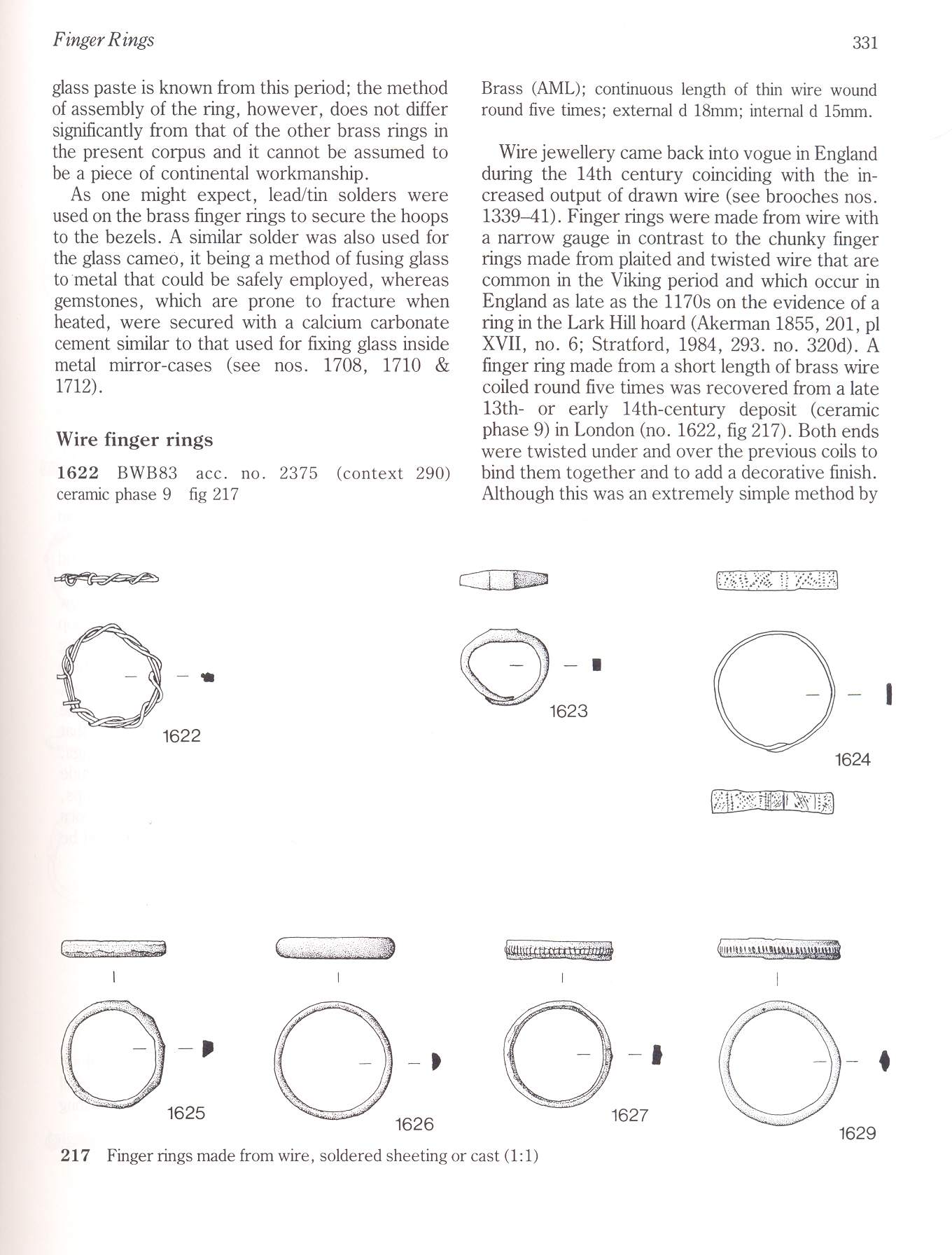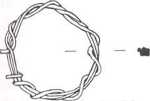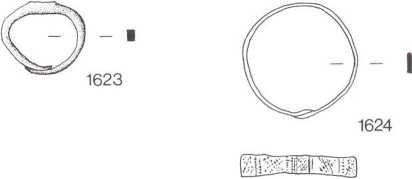358 (19)

331
FingerRings
glass pastę is known from this period; the method of assembly of the ring, however, does not differ significantly from that of the other brass rings in the present corpus and it cannot be assumed to be a piece of Continental workmanship.
As one might expect, lead/tin solders were used on the brass finger rings to secure the hoops to the bezels. A similar solder was also used for the glass cameo, it being a method of fusing glass to metal that could be safely employed, whereas gemstones, which are prone to fracture when heated, were secured with a calcium carbonate cement similar to that used for fbring glass inside metal mirror-cases (see nos. 1708, 1710 & 1712).
Wire finger rings
1622 BWB83 acc. no. 2375 (context 290) ceramic phase 9 fig 217
Brass (AML); continuous length of thin wire wound round five times; extemal d 18mm; intemal d 15mm.
Wire jewellery came back into vogue in England during the 14th century coinciding with the in-creased output of drawn wire (see brooches nos. 1339-41). Finger rings were madę from wire with a narrow gauge in contrast to the chunky finger rings madę from plaited and twisted wire that are common in the Viking period and which occur in England as late as the 1170s on the evidence of a ring in the Lark Hill hoard (Akerman 1855, 201, pl XVII, no. 6; Stratford, 1984, 293. no. 320d). A finger ring madę from a short length of brass wire coiled round five times was recovered from a late 13th- or early 14th-century deposit (ceramic phase 9) in London (no. 1622, fig 217). Both ends were twisted under and over the previous coils to bind them together and to add a decorative finish. Although this was an extremely simple method by

1622


Wyszukiwarka
Podobne podstrony:
MOLECULAR DYNAMICS IN DEHYDRA TED STARCU C,ELS 63 As it is known from carlier study [13], for agiven
63 the act, mixes with the secretions, and penetrates its mother’s womb as an embryo *. It is elear,
126 materiał is considered hazardous and might be harmful to the environment. RM does not present co
for O. fusiformis. Af. nancllus n.$p. is described from soil around Ihc roots of Zea m1ys in Nigeria
00057 ?3894d9003361260a26a45e7f0f6dd0 56 Hembree & Zirnmer where Gt = P; H’(R< + H P; H’) 1
This effect is known as "magnetoresist-ance.” Ohio Semiconductors, Inc. has de-vcloped a device
0005 2 19.1. Źródła promieni jonizujących i ich znaczenie w medycynie.......... 35
Katowice May 17, 1993 TO WHOMIT MAY CONCERN: Mrs.G.Bednarski is known to me sińce 1983. At this time
DSC00903 (6) 111 is known, that fractures of bones both at youths and elder men happen in the area o
section 2.5 and [1]. Mnesia is known to have problems with performance degradation when the database
Overview of Musa viruses in sub-Saharan Africa is known in India as Kokkan disease. BBrMV also infec
The atmosphere of Earth is the layer of [--1 V«yUW commonly known as L 1. that surrounds the planet
Zobacz także: MOULD CLEANER str. 19. EJECTOR PIN LUBRICANT str. is. CLEAR MOULD PROTECTIVE str. 18,
UniVibe Lesley?fect UniYibe 100K The UniVibe is f amous from Jimi’s use of it. This schematic is kno
IYC2011 International Ytpar of CHEMISTRY For release 19 Febniary 2010 Element 112 is Named Copei
więcej podobnych podstron